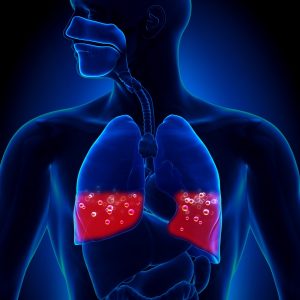 In short, pulmonary edema is a condition where a person’s lungs are prone to filling up with fluid. Because of this, the body then struggles to get enough oxygen. Pulmonary edema is especially risky for people with heart problems. Treatment consists of medications, but there are also surgeries and procedures used to drain the fluid from the lungs. Timely treatment of the condition’s underlying causes improves a patient’s outlook.
In short, pulmonary edema is a condition where a person’s lungs are prone to filling up with fluid. Because of this, the body then struggles to get enough oxygen. Pulmonary edema is especially risky for people with heart problems. Treatment consists of medications, but there are also surgeries and procedures used to drain the fluid from the lungs. Timely treatment of the condition’s underlying causes improves a patient’s outlook.
This condition is also called “lung congestion,” “lung water,” or “pulmonary congestion.”
Pulmonary Edema Symptoms
Pulmonary edema makes a person feel shortness of breath as the body struggles to receive oxygen. The increasing amounts of fluid in the lungs block the oxygen from entering the bloodstream. Until the fluid is removed by a doctor, a patient may feel:
- Fatigue
- Wheezing
- Shortness of breath when physically active
- Lower body swelling
- Rapid weight gain
- Feeling breathless when lying down
People also experience this condition as a side effect of high altitude sickness, when there isn’t enough oxygen in the air. These symptoms include:
- Fever
- Headaches
- Shortness of breath
- Coughing
- Rapid or irregular heartbeat
When Do Pulmonary Edema Symptoms Become an Emergency?
Acute pulmonary edema develops suddenly and if left untreated the fluid in the lungs can make a person drown. Call 911 or your medical emergency service if you experience:
- Inability to breathe.
- Anxiety from breathing issues.
- Chest pain
- Sweating and breathing difficulties
- Pallid, blue or grey skin.
- A rough cough that produces a frothy, pink mucus
- Feelings of suffocation
- Irregular, rapid heartbeat
Treating Pulmonary Edema
The first thing a healthcare team will do to a patient with pulmonary edema is introduce more oxygen to the system. They prop the patient up and deliver 100% oxygen through a nasal cannula or positive pressure mask to assist with breathing. If this does not work, the healthcare providers may insert a endotracheal tube, or breathing tube, down their throat for mechanical ventilation.
From there, the doctor diagnoses the cause of the pulmonary edema and treatment from then on out attempts to fix the underlying cause. They may administer:
- Heart medications to control pulse and blood pressure.
- Suction catheter to remove fluid from the lungs.
- Pain relievers to make the experience more comfortable.
- Preload reducers to decrease fluid pressure in the heart and lungs.
- Afterload reduces to dilate blood vessels
Pulmonary edema is a serious lung condition that often develops quickly and escalates to a medical emergency without much warning. If you are susceptible to pneumonia or expect to be exercising at a higher altitude in the future, you must be careful. Taking precautionary steps against pulmonary edema can save your life.
Dr. Stacie Grossfeld of Orthopaedic Specialists, in Louisville, KY, is an orthopedic surgeon with a focus on sports medicine. She has over 20 years of experience treating athletic and non-athletic patients alike. If you feel you may be at risk of developing pulmonary edema, contact her today. Call 502-212-2663 or visit one of her two office locations to schedule an appointment.

Recent Comments